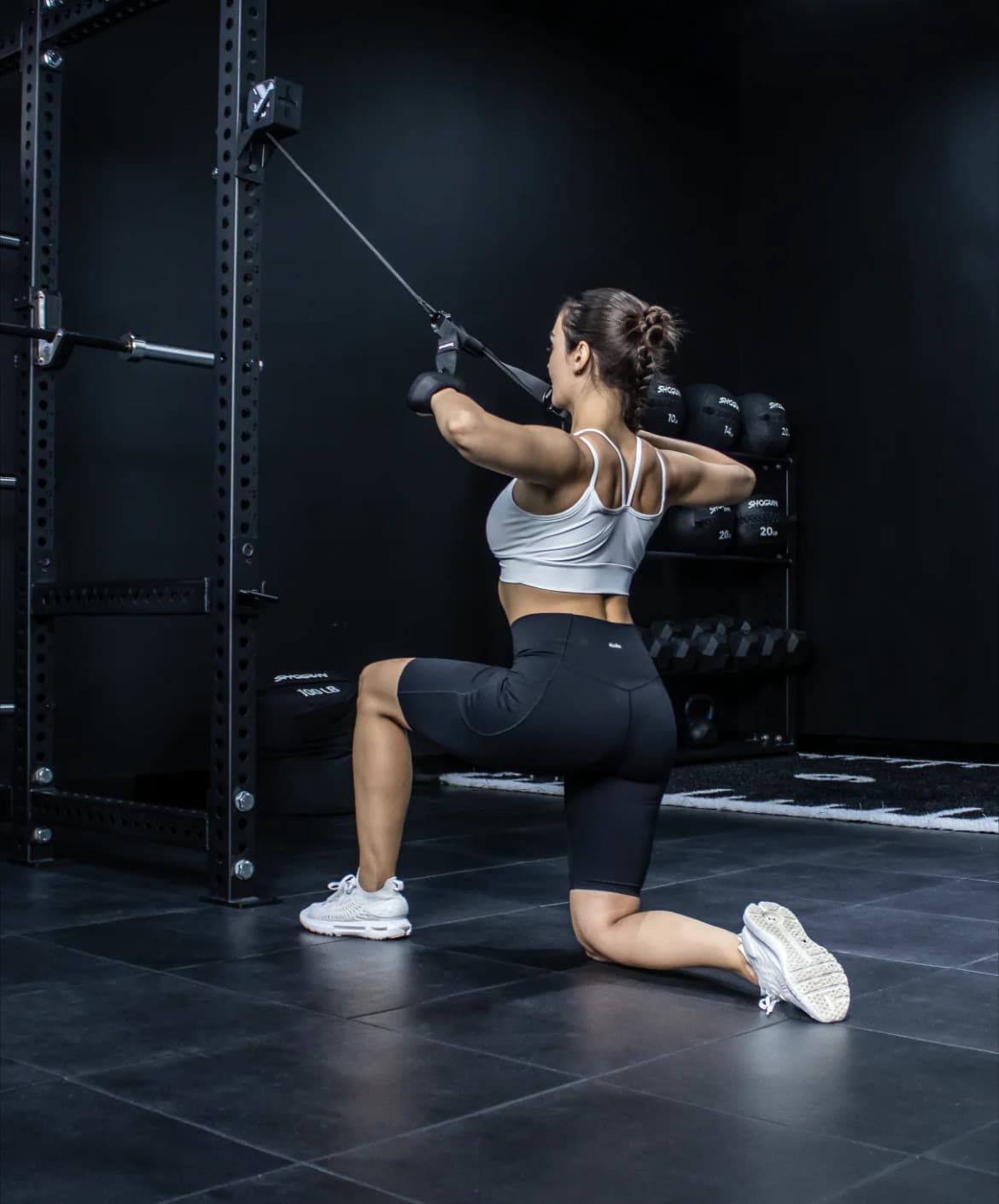By now you’ve probably heard that heel elevation has a ton of useful benefits when doing a huge variety of exercises…
But should you be working out on a slant board or on a squat wedge?
Which makes more sense to buy?
.
Whether you should choose a slant board or squat wedge will largely be determined by the range of exercises and movements you intend on performing with an elevated heel.
Having trained virtually exclusively with an elevated heel for years now, using both squat wedges and slant boards, I’m somewhat overqualified to be answering this question!
I’ll briefly run through the benefits of training with an elevated heel and then we’ll help you determine which piece of equipment makes the most sense for your needs as an athlete.
Let’s begin!
Benefits Of An Elevated Heel
If you’re reading this article, chances are you’re already somewhat familiar with the benefits of elevating your heels when in the gym, but allow me to do a quick refresher…
Elevated heels allow you to squat deeper with less discomfort
They do this by shifting your center of gravity backwards as your knees track out over your toes, allowing you to sink into the full range of motion more easily.
Elevated heels target your quads more
Namely the VMO (teardrop muscle).
Squats become significantly more of a quad-dominant movement when you’re going heels elevated because of the increased knee flexion and reduced hip flexion.
This is great if you’re all set in the posterior chain department but want to bring up your quads.
Elevated heels reduce the strain on your lower back
If you typically do low-bar squats, you might find that your lower back gasses out before your legs do, which is definitely not ideal.

Elevating your heel keeps the tension on your legs and preserves your lower back for when you need it, like back day.
Elevated heels can reduce systemic fatigue
Another byproduct of doing really heavy squats is that they cause a good amount of CNS fatigue, making a brutal squat workout very difficult to recover from.
You can’t lift as much weight using elevated heels which means you’ll encounter less systemic fatigue which will allow you to train legs more frequently!
Elevated heels can ENHANCE your ankle mobility
If done correctly, because you’re able to reach a much greater squat depth, you’ll actually get an enhanced stretch through the ankle.

There’s a myth in the industry right now that elevating your heels will reduce your ankle mobility, but this simply isn’t true – at least if you’re hitting full depth.
Using either a slant board or squat wedge is the easiest way to improve your ankle mobility.
Poor ankle mobility is the norm these days because the shoes we wear as human beings tend to have a slightly elevated heel on them.
Walking around all day with an elevated heel has caused us all to have shocking ankle mobility.
How do we remedy that?
Get on a slant board or squat wedge and do some static stretching.
Hold the stretch for 60+ seconds, do a few each side, and do them daily, and you’ll have fantastic ankle mobility in no time!
If you’d like more information on the benefits of elevating your heels in the gym, check out the following two articles:
- 6 Squat Wedge Benefits & Why You Should Be Using Them
- 5 Powerful Benefits Of Training With A Slant Board
How To Pick The Right Tool For Your Needs
So, squat wedge or slant board?
The answer is…
At the end of the day, it doesn’t really matter all that much.
Either option is going to be super beneficial to your training, so it’s pretty hard to make a mistake here.
In a nutshell, it all comes down to exactly what you plan on doing with your squat wedge/slant board.
What Exercises Do You Intend On Performing?
Here are my official recommendations based on intended usage…
| Exercises | Best Tool For Heel Elevation | Recommended Product |
| Static stretching only | Slant board/Squat wedge | FAE Slant Board Pro/TBG Slant Ramps |
| Squats only | Squat wedge | Squat Wedgiez |
| ATG split squats | Squat wedge | TBG Slant Ramps |
| Patrick/Poliquin/Petersen step ups | Slant board | MR1NF1N1TY X Shogun VMO Pro |
From my experience, if you’re mainly planning on doing static calf stretching, you can’t go wrong with either a slant board or squat wedge.
If you’re only concerned with doing squats, squat wedges make the most sense because you can adjust your width to match your stance (some slant boards are too narrow).
If you imagine you’ll ever want to do ATG split squats, just choose the squat wedges as they make a lot more sense for this particular movement.
If you’re doing tons of reverse step ups, the VMO Pro is designed specifically for this movement and works exceptionally well.
In any case, before you buy anything, check out the following roundup articles where we’ve gone out and tested virtually every squat wedge/slant board on the market!
Conclusion
At the end of the day, whether you go for a squat wedge or a slant board doesn’t really matter all that much…
What’s important is that you understand the benefits of elevating your heels and are actually willing to give it a go in the gym.
Oh and that you stop using weight plates to elevate your heels!
Having said all that, I think squat wedges tend to be a little more versatile overall, so when in doubt I’d go with that option.
Happy heel elevated squats!























